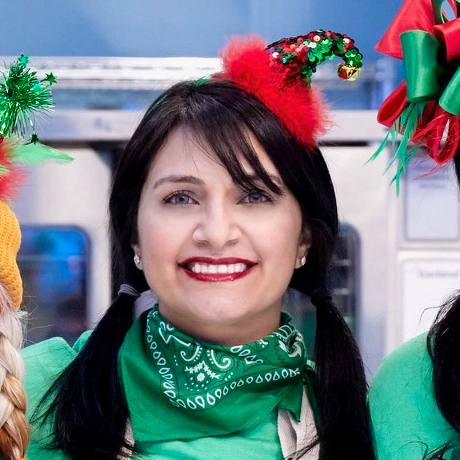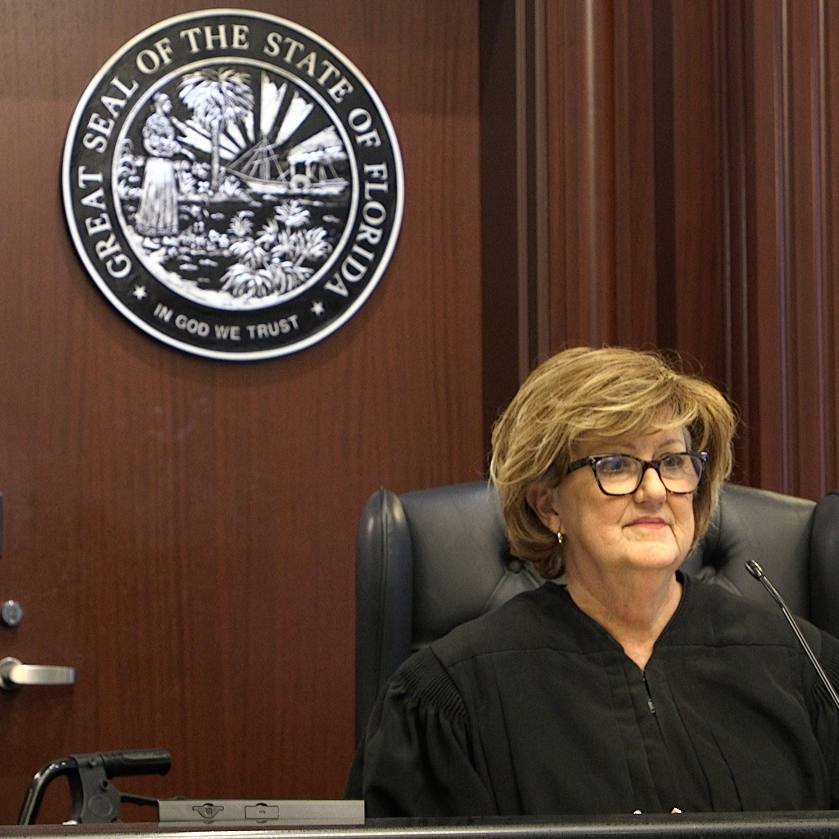When Nicole Eisenmann and Mike Loggie became engaged, they held out hope for a dream wedding. When that day was repeatedly postponed due to Nicole's lengthy cancer treatment, the couple decided to stop planning and embrace the present instead.
Nicole Eisenmann and Mike Loggie wanted their wedding day to be perfect. The high school sweethearts imagined a beautiful summer day providing the backdrop for a traditional ceremony. Nicole would be glowing in a white gown for her walk down the aisle.
Their dream wedding would not only commemorate their love and commitment, but also celebrate the completion of Nicole's cancer treatment. A rare soft tissue sarcoma had been discovered in her chest in November 2016. A month after Nicole's diagnosis, Mike proposed, and the couple set a date for June 2017.
Nicole's cancer, however, had other plans. Following surgery in Madison, Wisconsin, to remove the tumor, and a course of proton beam therapy, the cancer came back. The wedding was postponed.
After the recurrence, Nicole moved to Rochester, where she received care at Mayo Clinic's Rochester campus. Her multidisciplinary team developed a comprehensive treatment plan to address Nicole's aggressive form of cancer, called synovial sarcoma.
As the months wore on through a demanding treatment regimen, hope that Nicole would be well enough during 2018 to walk down the aisle for their big dream wedding also faded. But rather than continue waiting for ideal circumstances, the couple decided the best time for a wedding was the present.
"We'd been talking about getting married for so long," Nicole says. "We were like, 'Why don't we just do it now?'"
So on March 16, the couple stood before their families at the historic Plummer House in Rochester, Minnesota, under cloudy skies, with a cold wind blowing, and pledged to continue loving each other in sickness and health.
Aggressive cancer, challenging care
Nicole's cancer journey started when she began noticing pain in her left shoulder and the left side of her chest when she went running. Then one morning while driving to work, the pain was so sharp she went to urgent care. At the hospital in Madison, Nicole had a chest X-ray, which showed a large tumor above her left lung. The diagnosis of synovial sarcoma came as a shock.
"Soft-tissue sarcomas can present as young as 5 or as old as 85," says Shanda Blackmon, M.D., a surgeon in Mayo Clinic's Department of Thoracic Surgery. "In particular, the synovial type she had can present in younger patients, but the median age for diagnosis is 58."
A few days after she was diagnosed, Nicole had surgery to remove the tumor. "I thought the best course was to do surgery first and follow that up with radiation and chemotherapy," she says.
"I really liked Dr. Petersen a lot. She was just so welcoming and very optimistic with me."
Nicole Eisenmann
One of the members of Nicole's care team in Madison suggested that rather than receiving conventional radiation therapy, Nicole undergo proton beam therapy. So following surgery, Nicole met with Ivy Petersen, M.D., a Mayo Clinic radiation oncologist to discuss the treatment. They decided proton beam therapy would be a good choice for Nicole.
In February 2017, Nicole began a seven-week course of proton beam therapy at Mayo Clinic that targeted the upper portion of her chest. Throughout treatment, Nicole says her medical team worked to make sure she understood what was happening and stayed positive about her treatment.
"I really liked Dr. Petersen a lot. She was just so welcoming and very optimistic with me," Nicole says. "She took a lot of time to explain what was going on and to explain the radiation treatment."
Multidisciplinary team, comprehensive approach
After completing her last proton beam session in April 2017, Nicole returned to Madison. At her local hospital, she started chemotherapy. But midway through her first treatment, she reacted badly to the medicine, and the infusion was stopped. Nicole tried again the next day, but the same thing happened. After the second adverse reaction, her care team recommended she discontinue treatment but continue to be monitored.
"I was OK for about a month, and then I started getting some pain in my left side," Nicole says. "I was coughing more. I went in, and I had a scan. It looked like maybe I had some leftover blood by my lower left lung that was causing inflammation."
Nicole went back to Mayo Clinic, where she had a procedure to remove the fluid. Her team confirmed it was residual blood from the operation. Throughout the next month, however, Nicole's coughing and pain worsened. Imaging of her chest revealed that the tumor was back. This time, the cancerous mass was sitting on Nicole's diaphragm muscle and had grown into the lower part of her left lung.
Nicole's case came before the Mayo Clinic Sarcoma Tumor Review Board, which provides a multidisciplinary review of sarcoma cases at the clinic. After that review, Dr. Blackmon, Travis Grotz, M.D., from Surgical Oncology, and Narjust Duma, M.D., from Hematology, joined Dr. Petersen on Nicole's team. The group recommended Nicole receive five more weeks of proton beam therapy in preparation for another surgery.
"The tumors typically don't change in size with treatment," Dr. Petersen says. "It's more to try to sterilize the tumor cells, which prevents them from getting bigger and allows for the death of cells."
Six weeks after Nicole finished that round of proton beam therapy, Dr. Blackmon performed Nicole's second surgery on Jan. 19, 2018. The nearly 12-hour operation involved removing the tumor, as well as Nicole's left lung and most of her diaphragm.
"The radiation killed almost all the tumor, which made it easier to remove and made a complete resection more likely, which is really important," Dr. Blackmon says.
In the operating room immediately after Dr. Blackmon removed the diseased tissue, Dr. Grotz stepped in to apply hyperthermic intrathoracic chemotherapy, or heated chemotherapy, to Nicole's chest.
"The concern with Nicole's cancer was, did we kill all the cancer cells — the microscopic cells we can't see?" Dr. Grotz says. "Dr. Blackmon did the resection of the cancer we can see, but the whole chest cavity could potentially be at risk for residual microscopic cancer cells that could come back."
In Nicole's case, the heated chemotherapy was run through a modified, heart-lung bypass machine that warmed it to 108 degrees. The solution then was circulated through Nicole's chest cavity for about an hour, where it bathed her tissues with cancer-killing drugs. After an hour, the chemotherapy was drained, and Nicole's chest was closed.
In select patients with cancers of the chest or abdomen, heated chemotherapy may provide the best chance against recurrence, Dr. Grotz says.
"This was our last real chance to establish control of the tumor because a third operation is likely not possible," Dr. Grotz explains.
Finishing treatment, gaining perspective
Nicole says recovery was difficult. It was hard to move and eat, and she lacked energy. But by March, she began to feel more like herself. When her feeding tube was removed, and she was able to eat more normally, she felt even better.
Although Nicole still faced an extensive course of traditional chemotherapy, Nicole and Mike seized the opportunity while Nicole was feeling well to get married. Once the couple decided to go ahead with the ceremony, the plan for a simple outdoor event came together in about a week.
"We were both just so excited to finally do it and kind of have something good in the middle of this," Nicole says. "It was a really fun experience, and it was a really great day."
Two weeks after the ceremony, Nicole began the final phase of her Mayo Clinic treatment plan: chemotherapy.
"Because I had an adverse reaction the first time I started chemotherapy, this time I worked with my oncologist, Dr. Duma, to put together a plan of how I could still receive chemotherapy but prevent those adverse reactions," Nicole says.
"I'm just trying to enjoy every day, to live in the moment, trying not to rush to where I'm getting to, and to enjoy the journey getting there."
Nicole Eisenmann
Dr. Duma explains that because Nicole developed neurotoxicity with her first dose of chemotherapy, she received her second round as an inpatient at Mayo Clinic Hospital — Rochester, where she was observed for signs of neurological damage.
In the hospital, Nicole's team opted for her to receive the infusions over five days instead of two days, as is the normal infusion timetable.
"Her dose of chemotherapy was progressively titrated up, and after a few cycles, Nicole was receiving full doses and becoming stronger every day," Dr. Duma says.
At the end of July, Nicole completed her chemotherapy and moved with her husband back to their home in Madison. Today, Nicole and Mike are hopeful the care Nicole received at Mayo Clinic successfully removed all the cancer cells from her body.
The episode gave them new perspective and the ability to focus on the present.
"I feel like before all of this, I was always thinking about the future. I was trying to rush and reach my goals, and not really enjoying the now," Nicole says. "I'm just trying to enjoy every day, to live in the moment, trying not to rush to where I'm getting to, and to enjoy the journey getting there."
HELPFUL LINKS
- Learn more about soft tissue sarcomas.
- Read about Mayo Clinic's Proton Beam Therapy Program.
- Visit the Department of Thoracic Surgery.
- Explore Mayo Clinic.
- Request an appointment.








